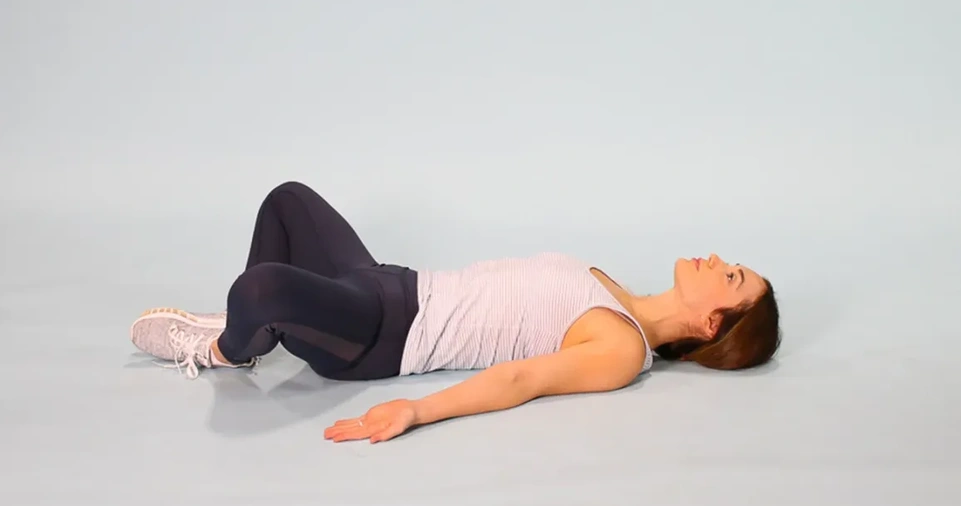How to Start a Simple Daily Stretching Routine begins with understanding that flexibility and mobility are essential for maintaining physical health and preventing injuries.
A consistent stretching routine improves posture, reduces muscle tension, and enhances daily performance—whether you’re working at a desk or training at the gym.
In just 10 to 15 minutes a day, you can increase your range of motion, relieve stiffness, and feel more energized.
This guide walks you through the most effective stretches, how to perform them safely, and how to build a routine that fits your lifestyle.
Whether you’re a beginner or looking to reintroduce movement into your day, starting a simple daily stretching routine is one of the most efficient ways to support long-term health and wellness.
Why Stretching Matters
Stretching isn’t just for athletes or people with tight hamstrings—it’s a vital practice for everyone.
Over time, our muscles and joints can become tight from inactivity, poor posture, or repetitive movements. Stretching helps:
- Maintain mobility and flexibility
- Prevent injury
- Enhance athletic performance
- Improve posture and alignment
- Reduce muscular tension and pain
Types of Stretching Explained
Understanding the different types of stretching can help you choose the right approach for your goals.
| Stretching Type | Description | When to Use |
|---|---|---|
| Static Stretching | Holding a stretch in a comfortable position for 15–60 seconds | After workouts or during a relaxation routine |
| Dynamic Stretching | Controlled, active movements that warm up muscles | Before workouts or morning routines |
| PNF Stretching | Contracting and relaxing muscles with a partner or resistance | Advanced routines or physical therapy |
| Ballistic Stretching | Bouncing into stretches to go beyond the normal range of motion | Rarely recommended due to injury risk |
ALSO READ: How to Store Fruits and Vegetables Properly: Ultimate Guide to Freshness and Flavor
Benefits of a Daily Stretching Routine

Committing to a simple daily stretching routine offers several benefits:
- Increased Flexibility: Enhances your range of motion, making everyday movements easier.
- Improved Posture: Counteracts the effects of sitting or hunching by realigning your spine and muscles.
- Reduced Pain and Tension: Helps alleviate neck, shoulder, and back discomfort.
- Stress Reduction: Promotes mindfulness and relaxation through slow, deep breathing.
- Boosted Circulation: Encourages blood flow to muscles, aiding in recovery and energy levels.
How to Start a Stretching Routine?
Starting small is key to building a lasting habit. Here’s how you can ease into a daily stretching routine:
- Choose a Consistent Time: Decide on a time that works best—morning to energize, mid-day for posture resets, or evening to unwind.
- Set Clear Goals: Are you stretching to improve mobility, reduce back pain, or just feel better overall? Knowing your “why” keeps you motivated.
- Begin with Just 5–10 Minutes: Starting short reduces overwhelm and helps form a habit without taking too much time.
- Create a Comfortable Space: Use a yoga mat or soft carpet, wear comfortable clothing, and play relaxing music if you like.
Sample Daily Stretching Routine (10–15 Minutes)
Here’s a beginner-friendly routine that targets major muscle groups and requires no equipment.
| Stretch | Duration | Instructions |
|---|---|---|
| Neck Rolls | 30 sec each direction | Gently roll your neck in circles |
| Shoulder Rolls | 30 sec | Roll shoulders forward, then backward |
| Arm Cross Stretch | 30 sec per arm | Stretch shoulders and upper back |
| Cat-Cow Stretch | 1 min | Move between arching and rounding the spine |
| Standing Forward Bend | 1 min | Hang loosely to stretch hamstrings and back |
| Quad Stretch | 30 sec per leg | Stand and pull one foot to your buttock |
| Hip Flexor Stretch | 30 sec per leg | Kneel and lean forward to stretch hip flexors |
| Seated Hamstring Stretch | 1 min | Reach for your toes while seated |
| Butterfly Stretch | 1 min | Press knees down gently while sitting |
| Child’s Pose | 1–2 min | Relax your back, neck, and shoulders |
Total Time: ~12–15 minutes
Stretching Tips for Beginners
- Breathe Deeply: Don’t hold your breath—breathe slowly and steadily.
- No Pain Rule: Stretch until you feel tension, not pain.
- Stay Consistent: Daily stretching, even if brief, yields the best results over time.
- Warm Up First: Especially if stretching deeply, do a few light movements to warm the muscles.
- Use a Timer: Helps keep you on track and ensures balanced effort on both sides.
Stretching by Body Area

Here’s a quick breakdown of useful stretches based on specific body areas:
| Body Part | Recommended Stretches |
|---|---|
| Neck | Neck tilts, neck rolls |
| Shoulders | Arm across chest, shoulder rolls |
| Back | Cat-cow, child’s pose |
| Hips | Hip flexor stretch, pigeon pose |
| Legs | Hamstring stretch, quad stretch, calf stretch |
| Wrists & Hands | Wrist flexor/extensor stretches |
Targeting specific areas can help if you have a sedentary job, are recovering from soreness, or focusing on flexibility goals.
ALSO READ: How to Create a Family Night Routine: Strengthen Bonds and Build Lasting Memories?
When to Stretch: Morning vs. Evening
Morning Stretching:
- Helps you wake up and energize
- Improves blood flow
- Counteracts stiffness from sleep
Evening Stretching:
- Promotes relaxation and better sleep
- Relieves tension from the day
- Helps muscles recover overnight
| Time of Day | Pros | Ideal Stretches |
|---|---|---|
| Morning | Increases energy, reduces stiffness | Dynamic stretches like arm circles, standing bends |
| Evening | Aids sleep, relieves tension | Static stretches like child’s pose, forward fold |
Common Stretching Mistakes to Avoid
Avoiding these mistakes will help you stay safe and get the most out of your routine:
- Bouncing While Stretching: Increases injury risk.
- Holding Your Breath: Reduces relaxation and oxygen flow.
- Overstretching Cold Muscles: Can cause tears; warm up first.
- Ignoring Imbalances: Stretch both sides evenly.
- Being Inconsistent: Stretching once a week won’t deliver the same benefits.
Stretching for Special Groups
For Seniors:
- Use a chair for support.
- Focus on gentle, seated stretches to improve joint function.
For Desk Workers:
- Do neck rolls, shoulder shrugs, and seated spinal twists.
- Try hourly micro-stretching breaks.
For Athletes:
- Use dynamic stretches pre-workout.
- Use static stretches post-workout for recovery and flexibility.
| Group | Focus Area | Example Stretches |
|---|---|---|
| Seniors | Mobility and balance | Seated hamstring, wall calf stretch |
| Desk Workers | Neck, shoulders, spine | Shoulder rolls, seated twist |
| Athletes | Performance and recovery | Dynamic leg swings, pigeon pose |
Recommended Tools and Apps

To make stretching easier and more engaging, consider using these tools:
Tools:
- Yoga mat: For comfort and grip
- Stretch strap: Helps with deeper stretches
- Foam roller: For muscle release
- Wall or chair: Useful for balance and support
Apps:
| App | Features |
|---|---|
| StretchIt | Guided video routines by goal (flexibility, splits, posture) |
| Daily Stretching | Short routines categorized by time of day |
| ROMWOD | Ideal for athletes and mobility training |
| Down Dog – Stretch | Customizable sequences and durations |
ALSO READ: How to Find Your Blogging Niche?
Conclusion
A simple daily stretching routine can be transformative for your body and mind. In just 10–15 minutes a day, you can improve your flexibility, reduce pain, and feel more energized.
The key is to start small, stay consistent, and choose stretches that fit your body and goals.
No matter your age, lifestyle, or fitness level, stretching offers lifelong benefits. So roll out your mat, take a deep breath, and begin your journey to a more flexible, pain-free life—one stretch at a time.







